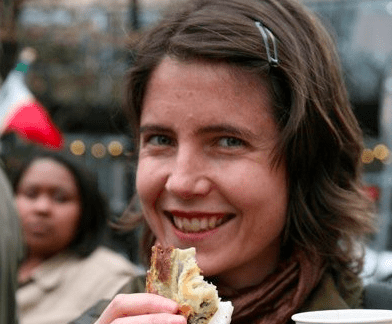Four years ago, Melody Murray started noticing these cute signs in her Portland, Oregon neighborhood of Sullivan’s Gulch. Posted in residents’ front yards, the signs read: “Certified Backyard Habitat” with a drawing of a black, red and white spotted towhee sitting on a leafy branch.
“I didn’t know what they were for,” says the Ohio native who moved to Oregon in 1994. Her curiosity piqued, she went online and quickly found out: The Backyard Habitat Certification began as a joint project of Columbia Land Trust and Portland Audubon (now called the Bird Alliance of Oregon) to encourage urban residents to garden without pesticides, plant native plants and remove invasive species. All of these practices support a flourishing community of native birds, insects and other wildlife.
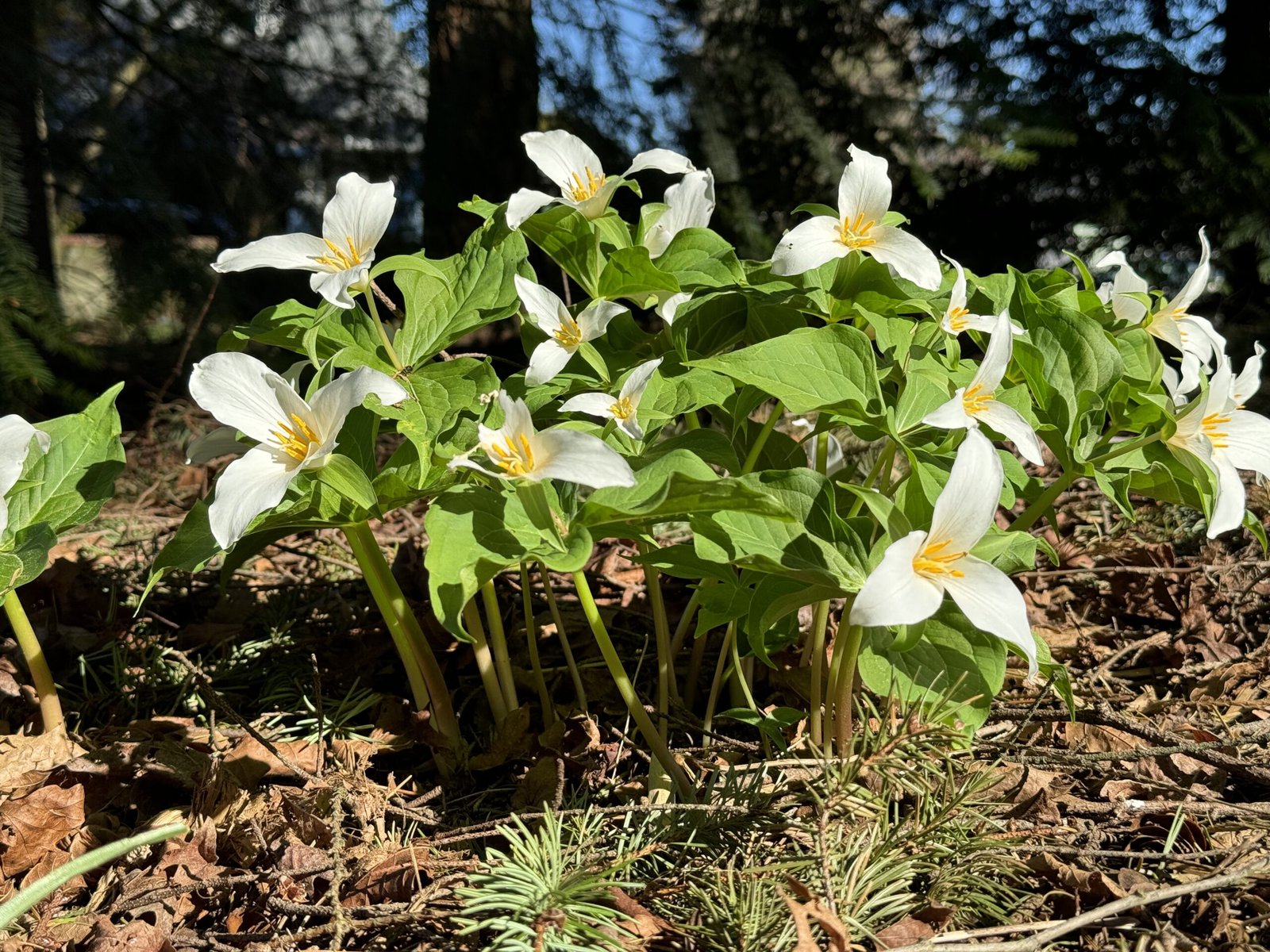
When Murray lucked into a one-acre property in the Cully neighborhood in 2021, she joined the Facebook group “Friends of Backyard Habitats,” where she lurked for a while until she felt ready to sign up. Because she and her partner had already cleared away invasive plants like ivy and vinca (periwinkles) — and planted an array of native trees, shrubs and plants — they got certified at the “Silver” level as soon as the Backyard Habitat technician could come for a site visit.
“It was super easy for me because I had already made an effort to remove the ‘bad guys,’” says Murray, who was already a skilled gardener. “There were other bad guys. But I had enough native stuff that it tipped the balance.”
Crushed by negative news?
Sign up for the Reasons to be Cheerful newsletter.Since the Backyard Habitat program launched in 2009, 14,000 properties have enrolled in the Portland metro area. (It covers Clackamas, Clark, Multnomah and Washington counties.) The program began as a pilot project in the Southwest hills neighborhood as a way to get neighbors to keep their ivy and blackberry plants from crawling over fences. The habitat signs were a helpful incentive from the start, along with certification, resources and discounts. It worked so well, says Peterson, that the city of Portland wanted to take it city-wide. That’s when Portland Audubon came in as a partner.
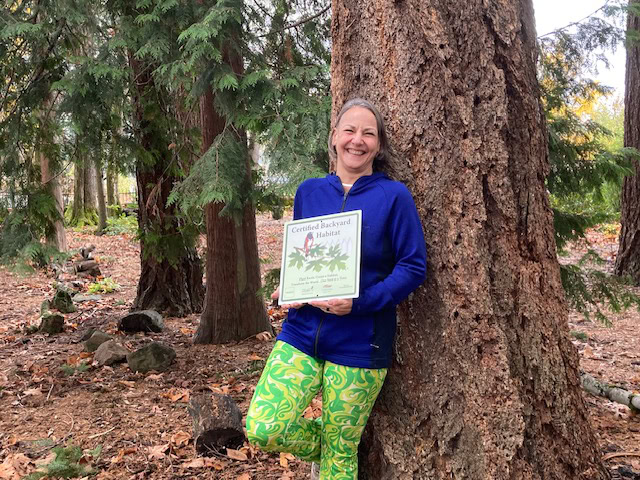
The program, which costs no more than $45 to join, is relatively straightforward. (There’s a sliding scale so that people who can’t afford $45 can pay less. There’s also an option to pay more than $45 to pay it forward.) Once a resident fills out an enrollment form and pays the fee, a habitat technician will come to their house for a site visit. They’ll look closely at the resident’s yards — contrary to the name, the certification covers not just a person’s backyard but front and side yards, as well — and give pro tips on creating habitat for wildlife, managing stormwater, decreasing pesticide use and removing nuisance weeds. They also recommend ways to increase the percentage of “naturescaped areas.” Naturescaping is a gardening practice which emulates nature, so the idea is to select plants that are native, in this case, to the Willamette Valley ecoregion. These plants have adapted to the local climate and are naturally resistant to pests and diseases. They also provide food and shelter to support the entire life cycles of pollinators and birds they have evolved with. As a bonus — and a win for lazy gardeners — they require less maintenance and help manage stormwater. The Backyard Habitat program also asks that each participant have at least three native canopy layers present. (Canopy layers are composed of tall shrubs, small shrubs, and groundcover.)
Getting rid of nuisance weeds is important because they smother and kill native plants, which local wildlife depend on. One of the most commonly found in gardens in the Portland area is ivy (all cultivars). Though it can look beautiful — who doesn’t like an ivy-draped railing? — it can damage trees and shrubs (which it can completely engulf, eventually killing them), increase erosion and degrade habitat. The one habitat they’re good for is rodents, which love to hide in the ivy. A good native alternative to ivy is oxalis (a.k.a. redwood sorrel), an edible perennial that flowers, or wild strawberry (though it requires full sun to fruit).
All these changes and additions can be intimidating at first. Patrice Ball first applied for certification in 2015. She had just been widowed and she wanted to honor her late husband, who had been a gardener. But after the site visit she felt overwhelmed by all the requirements. She didn’t tackle the invasive plants and eventually sold that house and moved to a smaller one that fit her needs better.
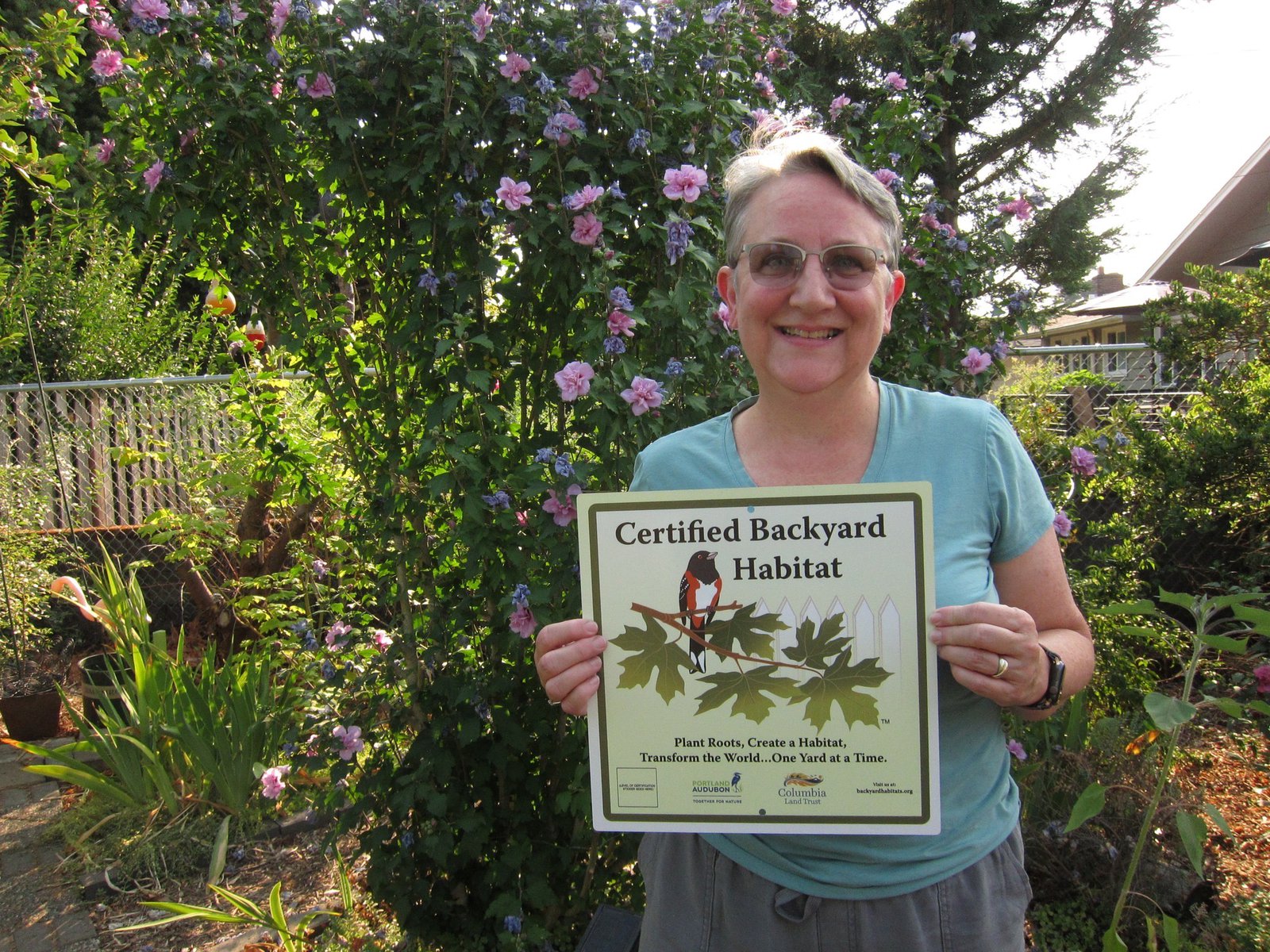
At the new property, she began gardening in earnest, with more attention to natives. “I thought, ‘Maybe someday I’ll apply for that,’” she says. One day, she was visiting a friend who had Backyard Habitat Certification and saw a banana tree in her yard. “I said, ‘Now wait a minute. That’s not native,’” she recalls. The friend informed her that certification doesn’t require you to have all native plants, just a certain percentage of your plantable yard. For Silver, that’s just five percent. (Gold is 15 percent and Platinum — much harder to reach — is 50 percent.) In 2022, when a technician came to do a site visit, Ball was pleasantly surprised to hear that she only had to do a few more things.
“When she left, I thought, OK, I have a shot at this!” That fall and the spring of 2023, Ball added the things the technician suggested. In the summer another technician came out to do the second inspection. “I was a little nervous,” Ball recalls. “I thought I’d get the lowest of the three rankings. At the end of the visit, he was like, ‘Congratulations: you got the Gold certification!’”
Ball had lived in Belize and for nostalgia’s sake she had also planted a hibiscus tree (not native to the Pacific Northwest). Hers was in full bloom at the time of the second site visit, and the technician asked if she could pose in front of it for the official photo, which he’d then put up on the Backyard Habitat social media. “I said, ‘But it’s not native!’ And he said, ‘That’s OK!’” recalls Ball. “Mainly he was like, ‘You’ve done a really good job, you have a water feature, there’s no lights to confuse the birds at night, you have really happy birds.’”
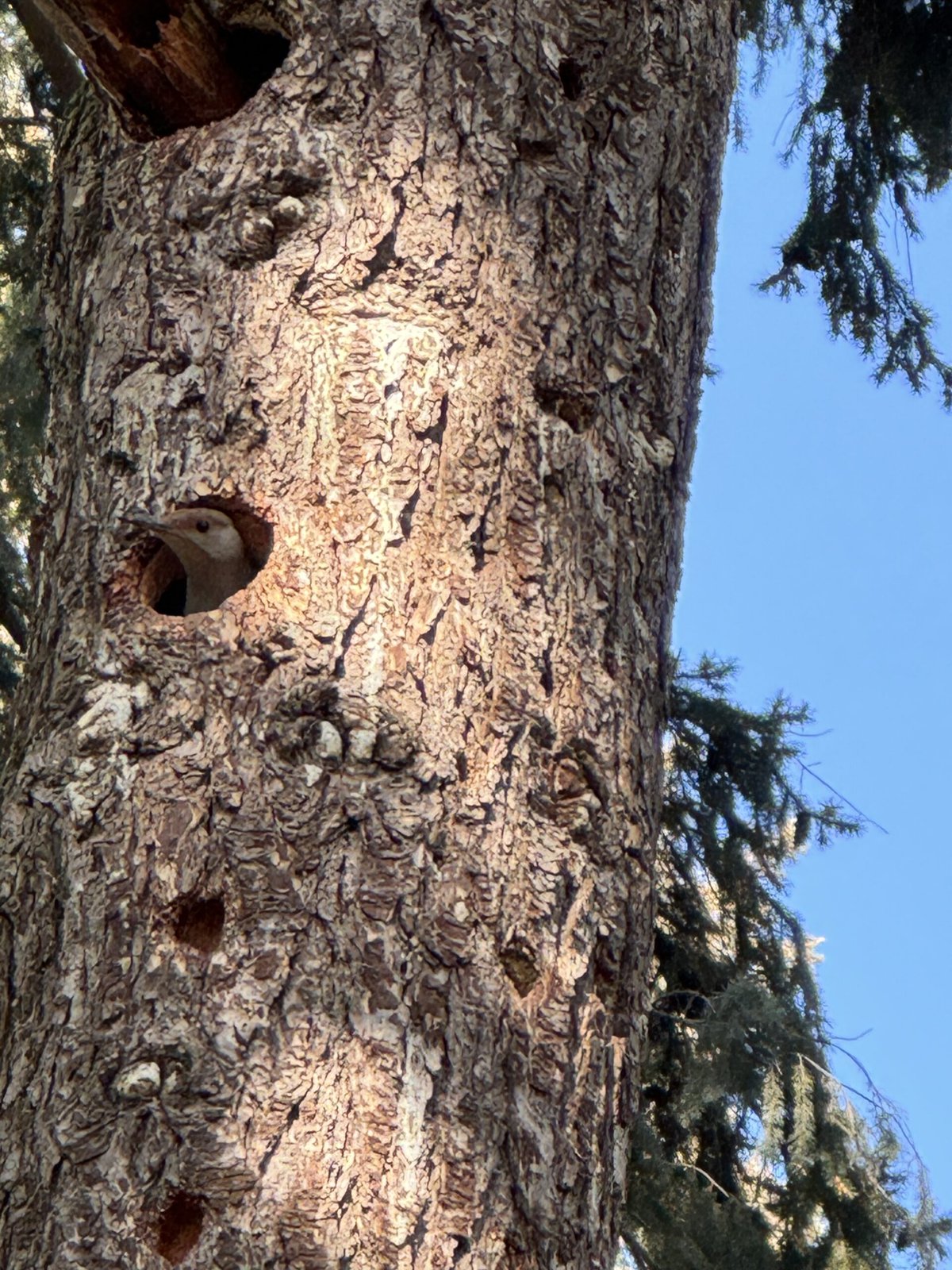
At the initial assessment, the technician provides a folder full of materials including a native plants brochure, a native plant tracking sheet and coupons for discounts at local nurseries. When they send their site report, the technician also includes a bunch of resources including a link to the Portland Plant List, which is a great way to find native plants and identify nuisance plants, and a link to the Friends of Backyard Habitats Facebook group.
It was a fun project for Murray, who may sign up for Backyard Habitat’s Open Garden tour (where others can tour your garden). “I have a ton of vine maple. I’ve got a couple if native roses. Every variety of Oregon grape you can imagine, Kinnikinnick, a lot of manzanita,” she says. “I’ve also got camas, penstemon, and Oregon white oak.” As if she couldn’t contain her excitement, Murray went on: “I’ve got huckleberry, native blueberries, native blackberries — not the Himalayan ones. Native rhododendrons, serviceberry. Cascara. A whole bunch of different kinds of ferns — every kind of fern you could imagine.”
Having a flourishing yard is just one reward. The other? “My birds and insects have really ticked upwards in a big way!”









